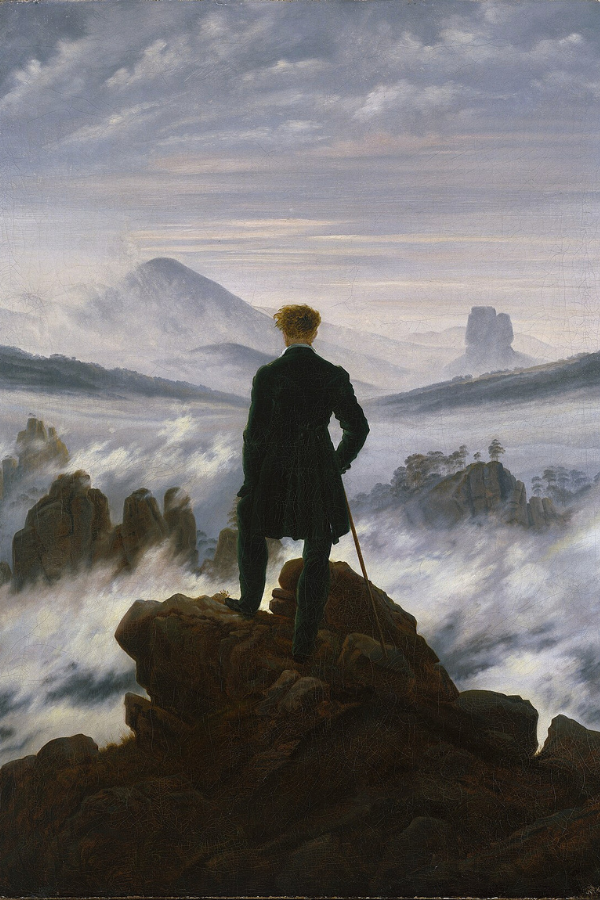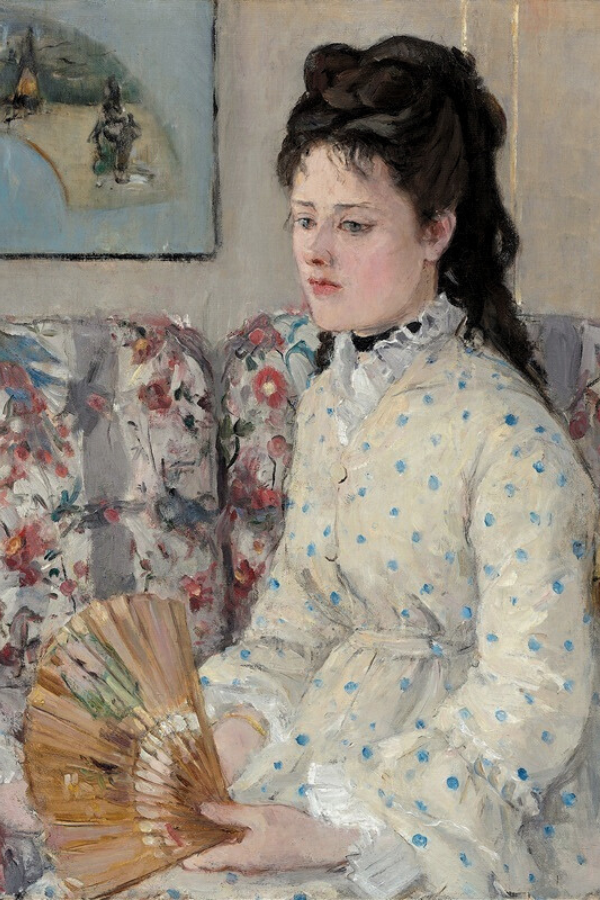
All About Impressionist Painter Berthe Morisot
Summary
Reflection Questions
Journal Prompt
Berthe Marie Pauline Morisot was a renowned French painter, celebrated for her significant role in the Impressionist movement. She gained prominence as one of the few female artists within this influential art movement during the late 19th century. Morisot’s fame rests on her groundbreaking contributions to Impressionism, challenging gender norms by becoming one of the first women to exhibit alongside her male counterparts. Her artistic legacy lies in capturing intimate moments, often portraying women in domestic settings. In this article, we offer you insight into the life and oeuvre of Berthe Morisot. Read on to learn more!
Morisot’s Early Life and Background
French painter Berthe Morisot was born in 1841 in Bourges, France, into a well-off family. Her father, Edmé Tiburce Morisot, was an important administrator in France, and her mother was a niece of Rococo painter Fragonard. She was destined for artistic pursuits and initially studied architecture. Her early art education, guided by private tutor Joseph Guichard, involved copying paintings at the Louvre. Despite warnings about the revolutionary impact on her bourgeoisie milieu, Morisot decided to continue on.
Influential figures like landscape painter Camille Corot encouraged her shift to plein-air painting. In 1864, her landscapes debuted at the Paris Salon, a rare feat for a young woman. Her connection with Édouard Manet marked a significant turn; their relationship influenced both artists’ work.
Her pivotal role in the Impressionist movement emerged as Morisot exhibited in the groundbreaking 1874 Impressionist exhibition. She also sold twenty-two paintings to dealer Durand-Ruel, signaling her establishment as an artist. Despite marrying Manet’s brother Eugène Manet, Morisot’s prominence and self-critical approach defined her career. She would later show paintings in many subsequent Impressionist exhibitions.
Artistic Career and Development
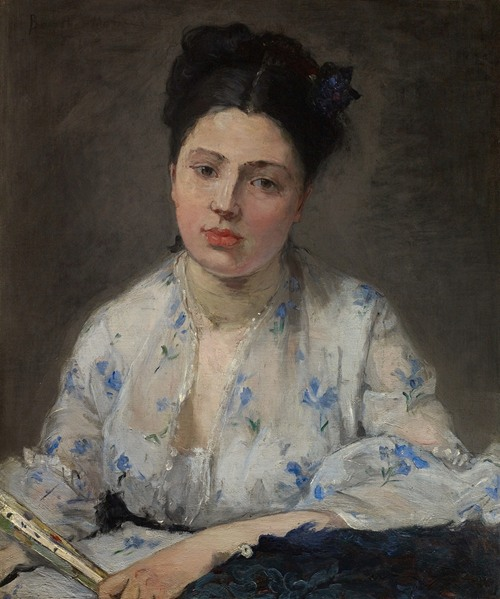
Berthe Morisot’s artistic career and development unfolded in tandem with the burgeoning Impressionist movement during the 1870s and 1880s. Rejecting traditional academic styles, Morisot’s paintings embraced experimentation with colors and brushstrokes, epitomizing the Impressionist ethos. Her approach, encapsulated in the desire to “capture something transient” reflected a departure from conventional artistic norms.
Morisot was a key contributor to the first Impressionist exhibition of 1874, showcasing works like “The Harbor at Cherbourg,” “Hide and Seek,” and “The Cradle.” Despite critical hostility, she continued exhibiting actively, contributing to the avant-garde movement. Her marriage to Eugène Manet, younger brother of Édouard, was an unexpected turn, but Eugène’s unwavering support allowed her artistic pursuits to flourish.
As part of the Impressionist circle, Morisot formed close bonds with influential figures like Degas, Monet, and Renoir. They introduced Berthe to their circle. Her upper middle-class family life, marked by the birth of her daughter Julie in 1878, became a significant theme in her art. Notably, she helped organize the final Impressionist exhibition in 1886, demonstrating her commitment to the movement.
Morisot’s later years saw her adapt to changing art landscapes. After the dissolution of the Impressionist group, she participated in exhibitions with avant-garde artists, showcasing her resilience and adaptability. Despite facing personal losses, including the death of her husband Eugène Manet in 1892, she continued painting until Morisot died an untimely death from pneumonia in 1895 at the age of 54.
Major Works and Themes
Berthe Morisot’s major works reflect her mastery of capturing intimate moments and exploring themes centered around domestic life and women in private spaces. Through vibrant brushstrokes, Morisot’s paintings and technique emphasize the transient nature of these scenes, while her keen use of color and light infuses life into her subjects, creating enduring impressions.
“The Cradle” (1872)
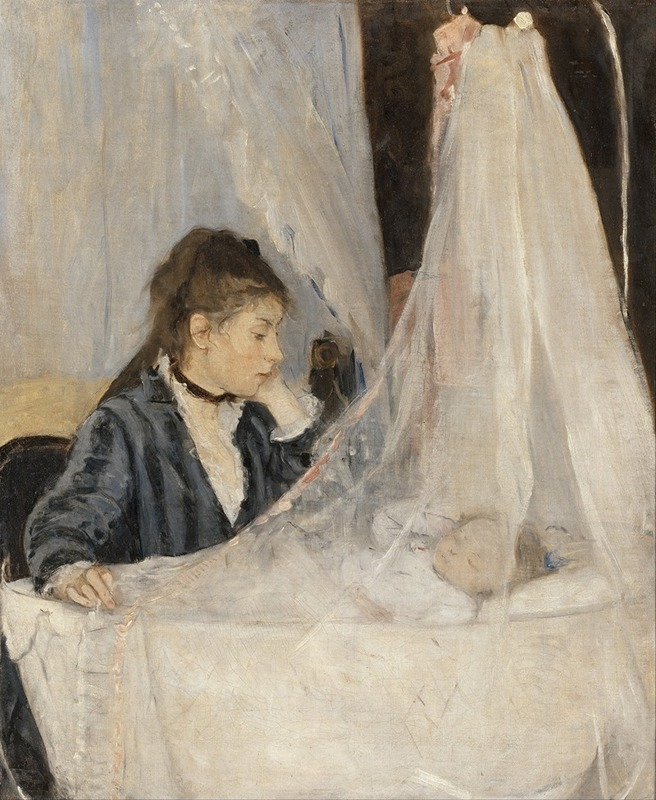
“The Cradle” stands as Berthe Morisot’s masterpiece, offering an intimate glimpse into domestic life and the profound connection between mother and child. This renowned painting captures Morisot’s sister Edma. Morisot painted Edma watching over her sleeping daughter Blanche in a cradle veiled by gauzy fabric.
Noteworthy for its portrayal of motherhood, this early work foreshadows Morisot’s recurring exploration of the theme. The interlocking triangles within the composition symbolize the harmony between the parent and only child. Edma, drawing a translucent curtain around the cradle, emphasizes the private-protective nature of their relationship. Edma wrote of her love for the painting as well. Edma worked closely with Berthe as a subject of most of her paintings about bourgeois families. The deliberate cropping invites a photographic comparison, enhancing the privileged and nuanced view of this poignant scene.
“Reading” (1873)
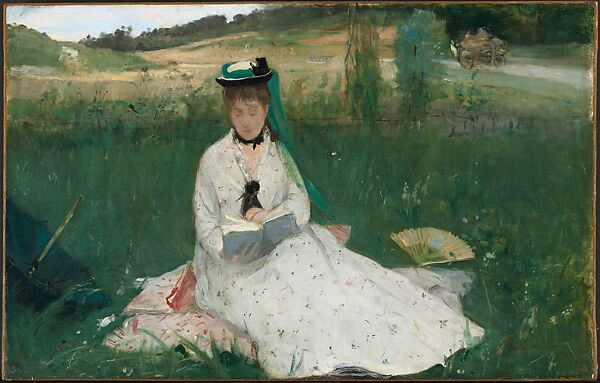
“Reading” captures a serene moment as her sister Edma immerses herself in a book in a tranquil meadow. The painting was displayed at the groundbreaking first Impressionist exhibition in 1874. It showcases Morisot’s adept use of open brushwork and delicate color accents. Edma’s casual posture and the scattered accessories contribute to the scene’s informality. Morisot skillfully plays with light, illuminating the dress and highlighting blossoms in the grass. The composition, reflecting 19th-century French middle-class leisure, invites viewers to appreciate a leisurely moment, free from societal constraints and emphasizes the significance of reading in a time when technology was not as prevalent.
“Woman at Her Toilette” (1875-1880)
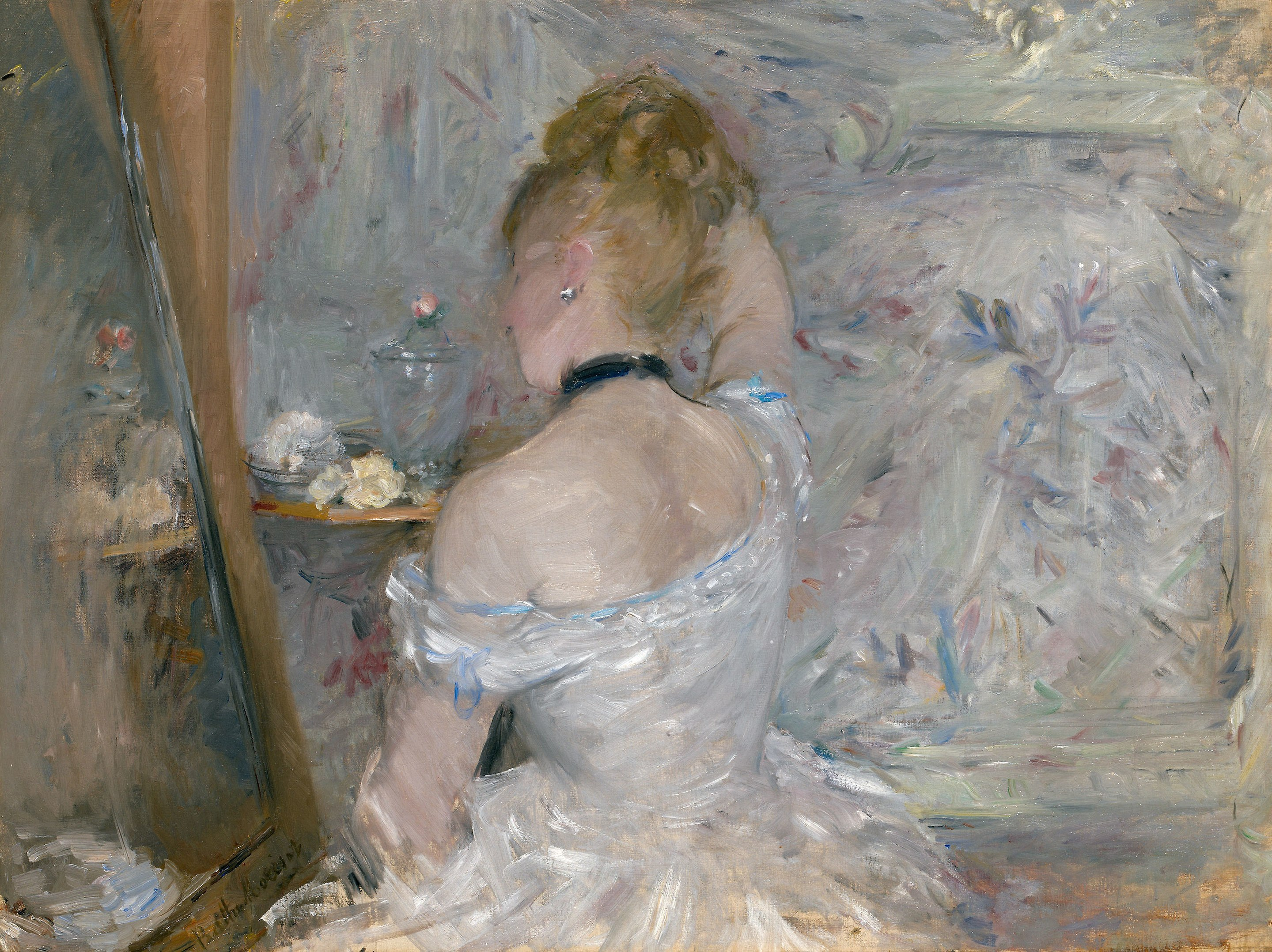
“Woman at Her Toilette” epitomizes Berthe Morisot’s exploration of women’s daily life. Exhibited at the fifth Impressionist exhibition in 1880, it showcases a woman in her boudoir engaged in the ritual of dressing. Morisot’s series of toilette scenes, informed by her experiences as a bourgeois woman, delve into the private moments where women shape their self-image.
The painting, with its dreamlike palette and blurred edges, reflects Rococo influences and emphasizes color over structure. Morisot’s nuanced depiction challenges traditional narratives of femininity, inviting viewers to reconsider societal perceptions of women’s roles and self-presentation during the late 19th century.
“The Harbor at Lorient” (1869)
Painted during the summer of 1869, “The Harbor at Lorient” is a pivotal example of Berthe Morisot’s evolving Impressionist style. Visiting her sister Edma in Lorient, Morisot experimented with vibrant colors and disjointed brushstrokes painting this young woman. Depicting Edma on a stone parapet with boats departing in the background, the painting captures a sense of movement and symbolizes Morisot’s artistic progress.
Influenced by Frédéric Bazille’s use of color, Morisot emphasized the sky’s reflection and adopted a brighter palette. The wide blue sky dominates, radiating sunlight and creating a merry-positive tone. Morisot’s loose brushstrokes contribute to the work’s textured and indistinct effect, best appreciated from a distance. Displayed at the Impressionists’ first showcase, the painting is now housed in the National Gallery of Art in Washington DC.
“Summer’s Day” (1879)
“Summer’s Day” captures the leisurely spirit of a summer day with its light and breezy atmosphere. Painted by Berthe Morisot during the summer of 1879 in the Bois de Boulogne, the artwork features two fashionably dressed women seated in a rowboat. Morisot, who had recently become a mother, ingeniously brought her models to the park, balancing maternal duties and her passion for painting.
Exhibited at the Fifth Great Impressionist Exhibition in 1880, the painting received acclaim for Morisot’s subtle use of color. The composition, thoughtfully arranged in three planes, displays Morisot’s characteristic Impressionist style, emphasizing spontaneity, energetic brushstrokes, and a focus on the feminine aspect. The disputed ownership, shared between the National Gallery in London and the Hugh Lane Gallery in Dublin, has been a subject of resolution. Notably, the painting was stolen in 1956 but later recovered after being left anonymously at the Irish Embassy.
“The Butterfly Hunt” (1874)
“The Butterfly Hunt” masterfully illustrates children playing in a lush garden, capturing a lively representation of movement and vibrant nature. The painting features a woman catching butterflies with her children, displaying eloquence in her pose as she reaches out with a ratchet. Morisot’s ability to convey risk and elegance is evident in the scene, where the woman seems carried away in the pursuit.
The painting showcases maximum color accuracy, vivid imagery, and meticulous resolution. Morisot’s unique approach, avoiding grays and blacks and employing a wide array of bright colors, characterizes her delicate and nuanced style. “The Butterfly Hunt” remains housed at the Musee d’Orsay in Paris, France, a testament to Morisot’s contribution to art.
“In the Dining Room” (1886)
In the Dining Room is a compelling oil-on-canvas painting, offering a candid and informal portrayal of a young woman in a domestic setting. Created during the Impressionist period, Morisot, known for her focus on indoor domestic subjects, depicts a central figure, possibly a maid, engaged in an unspecified task.
The cluttered display cabinet and fruit-laden table add to the domestic ambiance. The streaky brushstrokes create a sense of movement and complexity, contrasting with the overall calmness of the scene. Exhibited at the eighth Impressionist exhibition in 1886, the painting received mixed reviews, with critics noting Morisot’s distinctive artistic approach. Today, it resides in the National Gallery of Art in Washington, D.C.
“On the Balcony” (1872)

On the Balcony portrays her sister and niece on a Parisian balcony, providing a distinctive feminine perspective on urban life. As a prominent female Impressionist, Morisot, along with artists like Mary Cassatt, challenged societal norms of the time. In fact, Morisot was once described as one of “les trois grandes dames” of the movement. The painting, housed in the Ittleson Foundation in New York City, reflects Morisot’s mastery of light brushstrokes and her preference for intimate domestic scenes.
Despite facing criticism for her “unfinished” style and subject matter, Morisot achieved financial success. On the Balcony remains a piece of evidence of her ability to capture everyday moments with a unique, feminine charm, contributing to her lasting impact on the Impressionist movement.
“Eugène Manet and His Daughter in the Garden” (1883)
Eugène Manet and His Daughter in the Garden is an intimate portrayal of familial affection set in the scenic Bougival suburb of Paris. This Impressionist masterpiece, housed in the Musée Marmottan Monet in Paris, captures the tenderness between Morisot’s husband, Eugène Manet, and their daughter. The lush garden setting, marked by blooming flowers and a serene bench, provides a backdrop to the familial scene. Morisot’s skill in using her distinctive Impressionist style to evoke a sense of the transient nature of life is evident.
“View of Paris from the Trocadéro” (1872)
View of Paris from the Trocadéro is a departure from her common themes of domestic life, presenting a fully realized landscape. Painted just after the Franco-Prussian War, the cityscape showcases a peaceful Paris from the Trocadéro, reflecting the aftermath of significant historical events.
The barren Champ-de-Mars, once a bustling site of the 1867 Exposition Universelle, now appears quiet and fallow. The gray sky hints at the tumultuous events preceding this moment. Three figures, likely Morisot’s sisters, stand in the foreground, separated from the city by a fence, symbolizing the societal barriers faced by bourgeois women like Morisot in the artistic and professional spheres.
Berthe Morisot and Gender Dynamics
Morisot’s works steered the male-dominated 19th-century art world with resilience, challenging gender norms; as a pioneering female Impressionist, her works often depicted intimate domestic scenes, breaking away from grander male-focused subjects. Her paintings explored themes of women’s daily lives, providing a nuanced perspective on femininity.
Morisot faced obstacles due to her gender, and her role as both a wife and mother complicated her professional pursuits. Criticized for her “feminine charm,” she defied societal expectations with her unique brushstrokes and innovative techniques. Despite initial prejudices, her heritage as a trailblazing female artist has gained recognition, inspiring later generations to reconsider gender dynamics in art.
Morisot’s Personal Life

Berthe Morisot’s personal life played a profound role in shaping her artistic identity. A pivotal moment unfolded when she married Eugène Manet, brother of renowned painter Édouard Manet. This union not only integrated her into the artistic circles of the time but also introduced her to a supportive partner who championed her creative endeavors. Morisot’s role as a wife and mother added nuanced dimensions to her art, depicting intimate scenes of domestic life and affluent bourgeois family portrayals.
The complexities of motherhood, evident in paintings of her daughter Julie Manet, infused her work with an authenticity that echoed with many. Morisot’s personal experiences, entwined with her artistic vision, became a testament to the symbiotic relationship between life’s tapestry and the strokes on her canvases, contributing significantly to the Impressionist movement.
Her Legacy and Influence
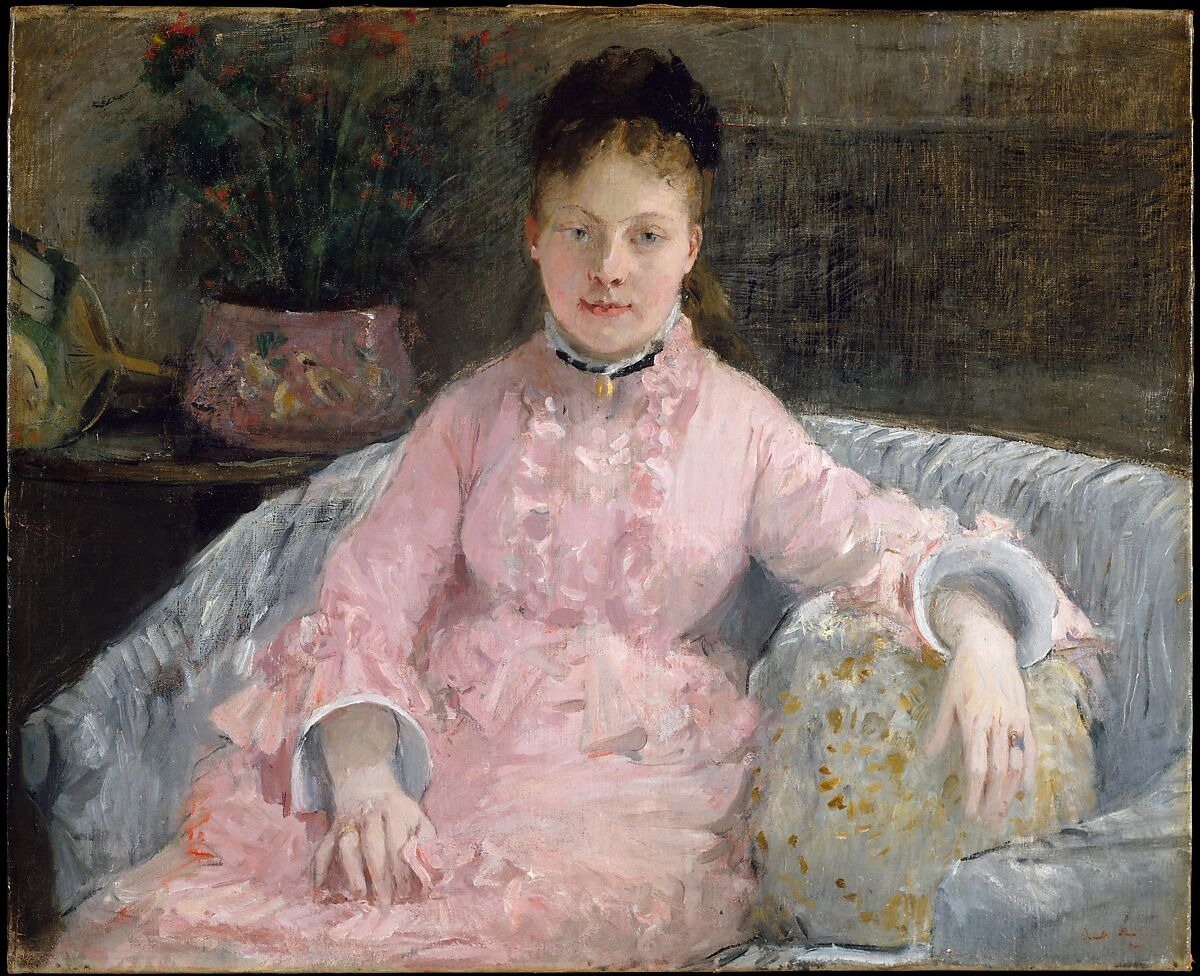
Berthe Morisot’s profound impact on the art world extends through her innovative contributions to Impressionism and her influence on subsequent artists, particularly women. Morisot challenged traditional gender roles and societal expectations for women in the arts. She played a crucial role in shaping the Impressionist movement, not only as an artist but also as a supportive force for her contemporaries, including Mary Cassatt and Eva Gonzalès.
Posthumously, Morisot’s work continues to be revered for its emotional depth, technical brilliance, and pioneering spirit. She is an inspiration for art students who receive art education worldwide. She was among the most prolific painters of all time. Her legacy has grown in stature, and she is recognized as more than a mere student of Édouard Manet but as a collaborator who influenced him reciprocally. In contemporary art history, Morisot holds a significant standing as an icon with a reevaluation of her contributions to the development of Impressionism.
Morisot’s works and influence on future generations, especially female painters, cannot be overstated. Her determination to navigate the male-dominated art world opened doors for women to pursue artistic careers. The intimate and personal themes explored in her paintings, often depicting domestic life, paved the way for a broader exploration of women’s experiences in art.
Exhibitions and Collections
Berthe Morisot’s posthumous exhibitions have showcased her significant contributions to the Impressionist movement, offering audiences a retrospective glimpse into her innovative and influential body of work.
Some major solo exhibitions include:
Paris, Boussod, Valadon et Cie. Exposition de tableaux, pastels et dessins par Berthe Morisot.
Date: 1892, May 25 – June 18
Paris, Galerie Durand-Ruel. Berthe Morisot (Madame Eugene Manet): exposition de son œuvre.
Date: 1896, March 5–23
Paris: Galerie Durand-Ruel. Exposition Berthe Morisot.
Date: 1902, April 23 – May 10
Paris, Galerie E. Druet. Exposition Berthe Morisot.
Date: 1905, January–February
Paris, Galerie Manzi-Joyant. Exposition Berthe Morisot.
Date: 1912
Paris. Galerie Manzi-Joyant. Exposition Berthe Morisot.
Date: 1914, April
Paris, Galerie Bernheim-Jeune. Cent oeuvres de Berthe Morisot (1841–1895).
Date: 1919, November 7–22
Paris, Galerie Marcel Bernheim. Réunion d’oeuvres, par Berthe Morisot.
Date: 1922, June 20 – July 8
Chicago, Arts Club of Chicago. Exposition of Paintings by Berthe Morisot.
Date: 1925, January 30 – March 10
London, Ernest Brown & Phillips, The Leicester Galleries. Berthe Morisot Exhibition.
Date: 1930, March–April
These exhibitions, held in esteemed galleries and museums, have contributed to the continuous recognition and celebration of Berthe Morisot’s impactful legacy in the art world. Notable venues showcasing her work include the Musée de l’Orangerie in Paris, the Museum of Fine Arts in Boston, the Art Institute of Chicago, the National Museum of Women in the Arts in Washington DC, and the Museo Thyssen-Bornemisza in Madrid.
Morisot’s enduring influence is further exemplified in recent exhibitions like “Berthe Morisot: Woman Impressionist” at the Musée National des Beaux-arts du Québec and “Berthe Morisot: Shaping Impressionism” at the Dulwich Picture Gallery in London.
Final Thoughts on Berthe Morisot’s Career and Legacy

Berthe Morisot’s unforgettable mark on art lies in her pioneering role as an Impressionist and her distinctive portrayal of domestic scenes. Her innovative brushwork and emphasis on intimate-feminine subjects challenged traditional norms. Morisot’s enduring legacy epitomizes resilience in the face of gender barriers, paving the way for future female artists. Her story symbolizes the triumph of artistic talent over societal constraints, inspiring generations and affirming the vital place of women in shaping the narrative of art history.
By Anila Hasnain.



